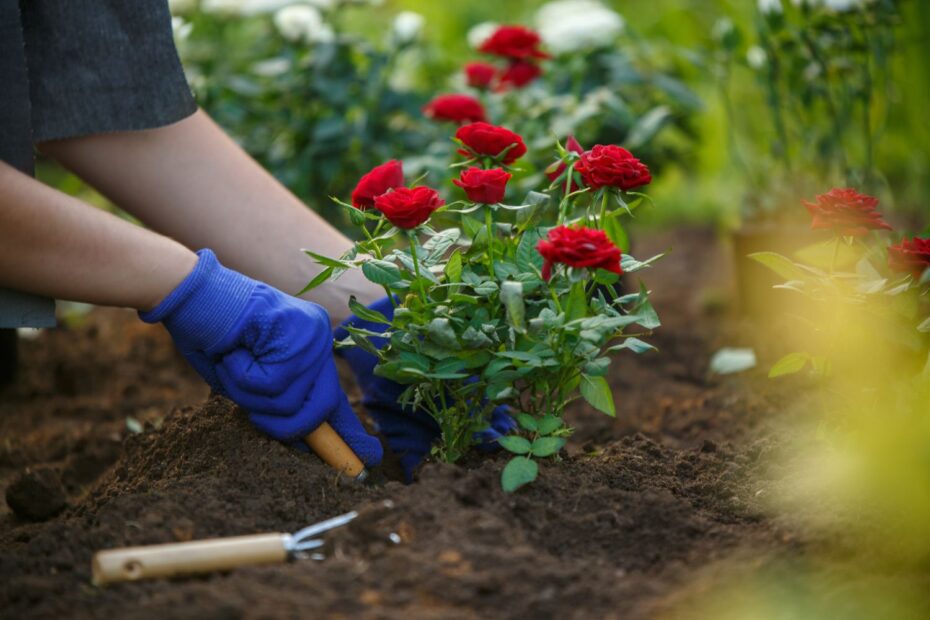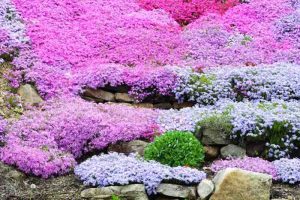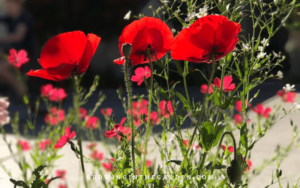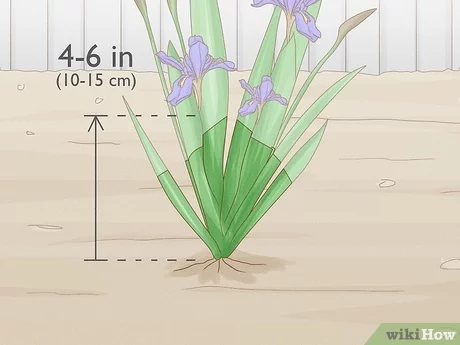Avoid Planting Roses in These Places: Here’s Why
Roses are a beautiful and fragrant addition to any garden, but they can be tricky to grow.
In this article, we’ll take a look at some of the places where you should avoid planting roses, and we’ll explain why. So if you’re thinking about adding roses to your garden, be sure to read this first!If you’re not careful, you can end up with a lot of problems, like pests, diseases, and poor growth..
Don’t Plant Roses in These Places
Don’t Plant Roses in These Places

When it comes to roses, there are a few places where you should avoid planting them. Here are a few reasons why:
- Too much shade: Roses need at least 6 hours of direct sunlight per day to thrive. If you plant them in an area that is too shady, they will not produce as many flowers and may be more susceptible to pests and diseases.
- Too much water: Roses do not like to be waterlogged. If you plant them in an area that is prone to flooding or has poor drainage, their roots will rot and the plants will die.
- Too much fertilizer: Roses do not need a lot of fertilizer. In fact, too much fertilizer can actually damage the plants. Fertilize them only once a year in the spring, and use a fertilizer that is specifically formulated for roses.
- Too close to other plants: Roses need plenty of space to grow. If you plant them too close to other plants, they will compete for water and nutrients and may not thrive.
Here is a table summarizing the reasons why you should not plant roses in these places:
| Place | Reason |
|---|---|
| Too much shade | Roses need at least 6 hours of direct sunlight per day to thrive. |
| Too much water | Roses do not like to be waterlogged. If you plant them in an area that is prone to flooding or has poor drainage, their roots will rot and the plants will die. |
| Too much fertilizer | Roses do not need a lot of fertilizer. In fact, too much fertilizer can actually damage the plants. Fertilize them only once a year in the spring, and use a fertilizer that is specifically formulated for roses. |
| Too close to other plants | Roses need plenty of space to grow. If you plant them too close to other plants, they will compete for water and nutrients and may not thrive. |
Roses are a beautiful flower, but they’re not always the best choice for your front yard. Here are a few reasons why you might want to reconsider planting roses in your front yard:
- They require a lot of maintenance. Roses need to be watered regularly, fertilized, and pruned. If you don’t have the time or energy to properly care for roses, they’re likely to look scraggly and unkempt.
- They’re susceptible to pests and diseases. Roses are a favorite target of pests like aphids, spider mites, and powdery mildew. If you don’t have a good pest control plan in place, your roses could be decimated by these pests.
- They can be dangerous to children and pets. The thorns on roses can be a hazard to children and pets. If you have young children or pets, you may want to choose a less thorny flower for your front yard.
If you’re still considering planting roses in your front yard, be sure to do your research and make sure you have the time, energy, and resources to properly care for them.
The Best Places to Plant Roses
The Best Places to Plant Roses
When it comes to planting roses, there are a few things to keep in mind. First, you need to make sure that the area you’re planting in gets enough sunlight. Roses need at least six hours of direct sunlight each day to thrive.
Second, you need to make sure that the soil is well-drained. Roses don’t like to sit in wet soil, so it’s important to make sure that the area you’re planting in has good drainage.
Third, you need to make sure that the area you’re planting in is protected from the wind. Roses can be damaged by strong winds, so it’s important to plant them in an area that is sheltered from the wind.
Once you’ve found an ideal spot to plant your roses, you can start digging your holes. The holes should be about two feet deep and two feet wide.
When you’re filling the holes, mix in some compost or well-rotted manure to improve the drainage. Then, set your roses in the holes and backfill them with soil.
Once you’ve planted your roses, give them a good watering. Then, mulch around the base of the plants to help retain moisture and keep the roots cool.
With a little care, your roses will thrive in no time.
Here are some additional tips for planting roses:
- Choose a variety of roses that is suited for your climate.
- Plant your roses in the spring or fall.
- Fertilize your roses regularly.
- Water your roses deeply and regularly.
- Prune your roses regularly.
- Protect your roses from pests and diseases.
How to Choose the Right Roses for Your Climate
Avoid Planting Roses in These Places: Here’s Why
Roses are beautiful flowers that can add a touch of elegance to any garden. However, not all places are ideal for growing roses. If you’re thinking about planting roses, it’s important to make sure that the climate and soil conditions are suitable. Here are a few places where you should avoid planting roses:
- Areas with heavy clay soil. Roses need well-drained soil, and heavy clay soil can become waterlogged and suffocate the roots.
- Areas with high winds. Roses can be damaged by strong winds, which can break the stems and damage the flowers.
- Areas with extreme temperatures. Roses can’t tolerate extreme heat or cold. They need to be planted in an area where the temperature stays relatively mild year-round.
- Areas with a lot of shade. Roses need full sun to bloom properly. If they don’t get enough sunlight, they will produce fewer flowers and the flowers will be smaller.
If you’re not sure whether your garden is suitable for growing roses, talk to a local nursery or garden center. They can help you choose the right roses for your climate and conditions.
How to Care for Roses
When it comes to planting roses, there are a few places you should avoid. These spots are either too hot, too cold, or too shady for roses to thrive.
- Too much sun: Roses need at least six hours of direct sunlight each day to produce their best blooms. If you live in an area with hot summers, you may need to plant your roses in a spot that gets afternoon shade.
- Too much shade: Roses also need some sunlight to produce flowers, but too much shade can cause them to become leggy and produce fewer blooms. If you live in an area with cool summers, you may need to plant your roses in a spot that gets morning sun and afternoon shade.
- Too cold: Roses are hardy plants, but they can’t tolerate freezing temperatures. If you live in an area with cold winters, you’ll need to plant your roses in a spot that is protected from the wind and snow.
Troubleshooting Common Rose Problems
Troubleshooting Common Rose Problems
Here are some tips on how to troubleshoot common rose problems:
- Wilting leaves: If your rose leaves are wilting, it could be due to a number of reasons. First, check the soil moisture level. Roses need to be watered regularly, but they don’t like to sit in wet soil. If the soil is too dry, your roses will wilt. If the soil is too wet, your roses may develop root rot.
- Brown leaves: Brown leaves on roses can be caused by a number of factors, including pests, diseases, and environmental conditions.
Diseases such as black spot and powdery mildew can also cause brown leaves. Environmental conditions such as drought, heat, and cold can also cause leaves to turn brown.Pests such as aphids, mites, and scale can all cause leaves to turn brown..
- Flower problems: If your roses are not blooming, it could be due to a number of reasons. First, check the soil fertility. Roses need a nutrient-rich soil in order to produce flowers. If the soil is too poor, your roses may not bloom. Second, check the watering schedule. Roses need to be watered regularly, but they don’t like to sit in wet soil. If the soil is too dry, your roses may not bloom. Third, check the sunlight exposure. Roses need full sun in order to produce flowers. If your roses are not getting enough sunlight, they may not bloom.
Troubleshooting Tips
- Wilting leaves: If your rose leaves are wilting, try the following:
- Water your roses regularly.
- Make sure the soil is not too wet or too dry.
- Check for pests and diseases.
- Prune your roses to improve air circulation.
- Brown leaves: If your rose leaves are turning brown, try the following:
- Check for pests and diseases.
- Prune your roses to improve air circulation.
- Water your roses regularly.
- Fertilize your roses with a nutrient-rich fertilizer.
- Make sure your roses are getting enough sunlight.
- Flower problems: If your roses are not blooming, try the following:
- Check the soil fertility.
- Water your roses regularly.
- Make sure your roses are getting enough sunlight.
- Prune your roses to improve air circulation.
- Fertilize your roses with a nutrient-rich fertilizer.
Resources
[1] https://www.gardeningknowhow.com/garden-how-to/soil-fertilizer/roses-soil-requirements.htm
[2] https://www.thespruce.com/roses-for-shadier-areas-4176662Concluding Remarks
So, there you have it! These are just a few of the places you should avoid planting roses. By following these tips, you can help ensure that your roses thrive and bloom for years to come.
But remember, the best way to learn about roses is to get your hands dirty and start planting! So what are you waiting for? Head to your local garden center and pick out a few roses today.
- Cat Palm vs Majesty Palm: Which Should You Choose? - June 30, 2024
- Flowers That Survive Winter: Discover the Exceptional No. 5 - June 30, 2024
- The Ultimate Guide to the Growth and Care of the Black Pagoda Lipstick Plant - June 29, 2024





